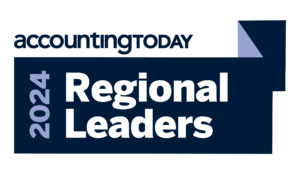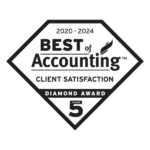This article summarizes our recent webinar, Solver Cloud and Power BI in Action: Transforming Reporting in Health and Human Services. You can watch the full replay here.
Jan Kubiska, Senior Director of IT and Security at Presley Ridge and Robert Morgan, Senior Manager at SD Digital reflected on how Solver and Power BI helped Pressley Ridge, a leading nonprofit serving over 8,000 clients annually across seven states, streamline operations and improve decision-making with integrated, real-time reporting tools.
The Challenge: Siloed Data and Manual Processes
Like many nonprofits, Pressley Ridge faced challenges managing data across multiple systems. This lack of integration created delays and limited visibility. Before implementing the new solution, Pressley Ridge encountered several common organizational challenges:
- Disjointed Systems: Key data was stored across three main platforms: Microsoft Dynamics (ERP), myEvolv (EHR), and UKG Pro (HRIS). These systems were not integrated, making cross-functional reporting difficult.
- Manual Reporting: Staff used Excel to manually extract, clean, and merge data. This process consumed valuable time and introduced the risk of errors.
- Outdated Insights: Reports were generated monthly or quarterly. By the time they reached decision-makers, the data was often no longer timely.
- Inefficient Use of Staff: Highly skilled employees were tied up with repetitive data tasks rather than strategic analysis.
The Solution: Automated Integration and Real-Time Reporting
To address these issues, SD Digital implemented an integrated solution using Solver Cloud for data warehousing and Power BI for data visualization.
- Centralized and Automated Data Management: Solver Cloud was used to integrate data from the ERP, EHR, and HRIS systems into a centralized warehouse. This data hub now serves as a single source of truth. Manual processes were replaced by automated workflows using SQL Server Integration Services and Solver’s built-in connectors, providing daily and even on-demand data refreshes.
- Role-Based Access to Financial Reports in Solver: Data access was customized for financial reports in Solver based on user roles. For example, program directors receive financial reports specific to their programs, while state-level leaders see broader roll-ups. This user-specific reporting approach ensures that staff only see the data that is relevant to their responsibilities.
- Interactive Dashboards with Power BI: While Solver provided a foundation for standardized, Excel-style financial reports, Power BI added dynamic, visual dashboards for operational insights. From client counts to trend analysis, these dashboards made data more accessible and actionable across all levels of the organization.
Real Results: Efficiency, Insight, and Impact
- Faster Reporting and Analysis: What previously took weeks now happens automatically. Reports on client census, staff turnover, and financial performance are generated in real time. For example, the weekly census report, once compiled manually by dozens of staff members, is now available instantly through Power BI.
- Ability to Get Answers Quickly Through the Use of Dashboards: Dedicated departmental dashboards provide quick answers to operational questions such as, “How many clients are we serving in a program this quarter?” This allows operational leaders to make decisions using the most current information available.
- Enhanced Risk Monitoring: By integrating a suicide risk screener and other clinical data, Pressley Ridge built dashboards to proactively identify high-risk cases. Heat maps and trend visuals helped leadership target areas requiring intervention.
- Streamlined HR Analytics: Previously manual turnover reports and candidate tracking are now automated and visualized. HR teams and program leaders can analyze hiring trends, applicant demographics, and reasons for candidate rejection in one place.
Lessons Learned from the Implementation
Jan Kubiska and Robert Morgan emphasized several key takeaways that contributed to the success of this initiative:
- Leadership Support is Essential: Pressley Ridge’s leadership team played a pivotal role in driving the transformation. Jan Kubiska served as a liaison between technical experts and organizational leaders, ensuring alignment and clear communication.
- Data Quality Comes First: Before building reports, the team prioritized cleaning and structuring data. Starting with accurate and consistent data prevented delays and rework later.
- Start with High-Impact Wins: The project focused initially on reports with the most strategic value. This approach demonstrated results quickly, helping build internal support and enthusiasm for the tools.
- Consistency Enhances Adoption: Reports and dashboards were designed with a standardized layout and color scheme. This consistent look and feel helped users navigate the tools more easily, regardless of their technical background.
- Training Drives Engagement: Pressley Ridge invested in user training sessions to show staff not only how to use the tools, but why they mattered. This helped foster adoption and confidence among users at all levels.
By integrating Solver Cloud and Power BI, Pressley Ridge transitioned from outdated, manual reporting systems to a powerful, real-time analytics platform. This shift improved operational efficiency, enhanced data accuracy, and enabled better, faster decision-making across the organization.
Whether you work in healthcare, education, or nonprofit services, Pressley Ridge’s experience offers a strong example of how data modernization can create measurable impact when paired with the right tools and strategies.
For more information please contact the SD Digital team at [email protected] or view the webinar replay.





